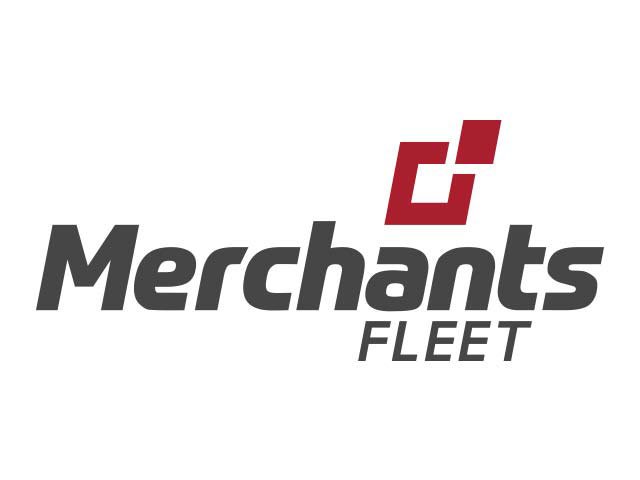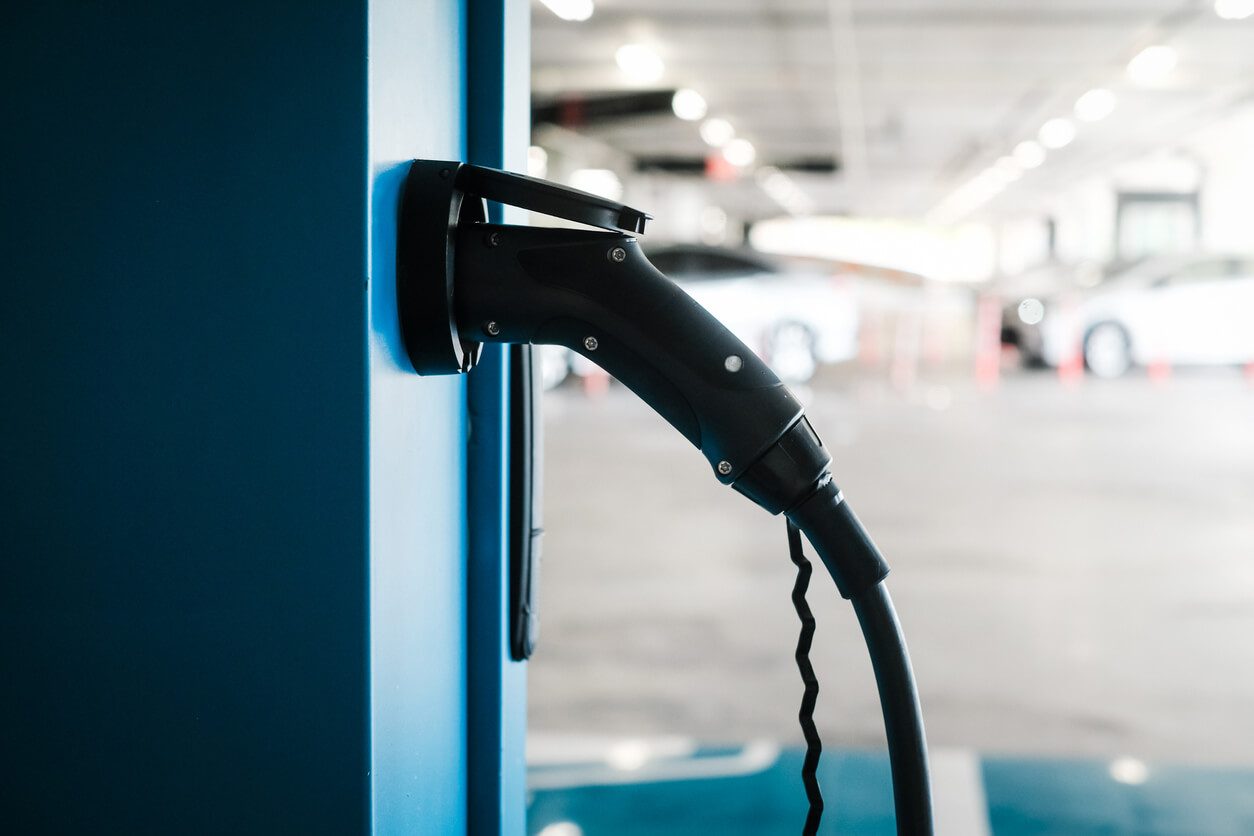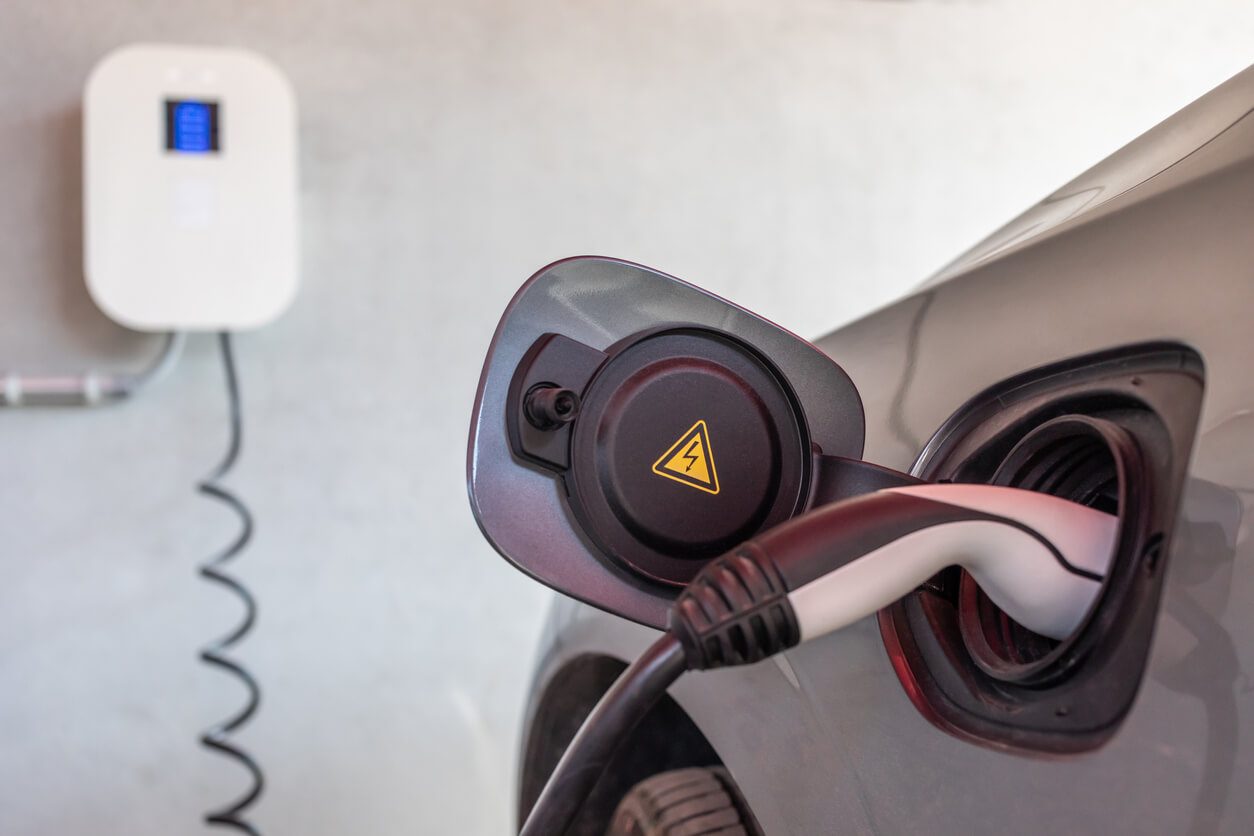EV Ecosystem: How to Successfully Approach EV Adoption
Electric vehicles (EVs) are becoming an increasingly popular option in commercial transportation with top companies like Amazon, AT&T, Comcast, Frito-Lay, IKEA, and PepsiCo either making a commitment to more sustainable vehicles or already adopting EVs into their fleet.
Electric vehicles offer a number of benefits — including a more sustainable form of transportation that helps reduce your carbon footprint and provides federal tax incentives — but the process to move from gas-powered vehicles to electric may seem a bit overwhelming and confusing. What are the best makes and models? What kind of charging infrastructure do you need? Where do you even begin?
This guide will help. Keep reading to learn more about the EV adoption process and why partnering with a fleet management company can help ease the transition — helping you optimize your fleet for both efficiency and sustainability.
The Parts of an EV Ecosystem
Vehicle Makes and Models
It’s no secret that there has been a recent global focus on sustainability initiatives, and as a result, automotive manufacturers are supporting this shift with an increased production of electric vehicles. As EVs increase in popularity, models are becoming more affordable and accessible for both personal and commercial use. In addition to passenger cars, there are also electric vans and pickup trucks. While light- and heavy-duty electric trucks are being manufactured, they aren’t as widely available.
There are three main types of electric vehicles:
- Battery Electric Vehicles (BEVs) or All-Electric Vehicles (AEVs) — These vehicles run entirely on an electric motor that’s powered by a large internal battery. They must be plugged in to charge the battery and use regenerative braking to reduce wasted energy while driving.
- Plug-In Hybrid Electric Vehicles (PHEVs) — These vehicles have both an internal combustion engine and an electric motor. While they generate some power through gasoline, they can also charge their batteries through regenerative braking and have a larger battery that can be plugged in for charging.
- Hybrid Electric Vehicles (HEVs) — These vehicles are powered by an internal combustion engine and an electric motor that uses a smaller internal battery compared to a BEV. A traditional hybrid is recharged through regenerative braking and receives most of its energy through gasoline.
Here are a few benefits and drawbacks of each vehicle type.
| Benefits | Drawbacks | |
| BEV |
|
|
| PHEV |
|
|
| Hybrid |
|
|
Information gathered by Consumer Reports
Battery Basics
Lithium-ion batteries, which are commonly used in cell phones and laptops, are the most popular battery in electric vehicles. According to Nissan, lithium-ion batteries “have higher energy densities than lead-acid batteries or nickel-metal hydride batteries, so it is possible to make the battery size smaller than others while retaining the same storage capacity.”
According to the U.S. Department of Energy’s Alternative Fuels Data Center, other benefits to lithium-ion batteries include:
- A high power-to-weight ratio
- High energy efficiency
- Good high-temperature performance
- Low self-discharge
One of the major benefits of a battery-operated vehicle is that electric and hybrid vehicles produce no or low exhaust emissions.
Charging Infrastructure
It’s important to understand that there are three levels of EV charging:
- Level 1 — These stations are typically for personal use. Drivers simply plug into a standard wall outlet, and the vehicle will take 24 hours or longer to fully charge. Level 1 charging stations do not require any investment, but they charge vehicles at a slower rate, which is why they are not recommended for EV fleets.
- Level 2 — These stations are the most common at workplaces, and each level 2 connector is capable of charging more than one vehicle per day. These stations can be installed in a home for faster charging since they will fully charge an EV overnight. Many public charging stations are also Level 2.
- Level 3 — Also known as Direct Current (DC) Fast Charging, Level 3 charging ports are available in some public depots. They can charge an electric vehicle up to 80% in just 20 minutes, but this type of charging is more expensive and may degrade a vehicle’s battery if used daily. DC fast charging, however, can be used as part of a fleet strategy to relieve charging congestion or to allow employees to charge vehicles quickly.
There are several options when it comes to charging your electrical vehicles.
- Depot — This refers to an overnight hub where fleet vehicles can recharge.
- Home — Drivers may have their own charging stations so that they can charge their vehicles directly from their own home.
- Public charging — Level 1-3 charging stations are available across the U.S. Drivers can search for both public and private charging stations on the U.S. Department of Energy’s Alternative Fueling Station Locator map.
Adoption Strategies
There is no “one-size-fits-all” approach to EV adoption since each organization and business is different. Your fleet management company will work with you to determine a successful strategy for your short-term and long-term goals when approaching EV adoption..
One of the best short-term strategies is the implementation of a pilot program. With the help of your FMC, you can implement EVs in a select portion of your fleet to learn, assess, and understand how to scale across operations.
Most organizations would have the long-term goal of a complete implementation of EVs and the appropriate charging infrastructure for every vehicle in their fleet.
EV Tax Credits and Government Incentives
Since there is a national push toward more sustainable transportation, government entities and utility companies are offering a variety of financial incentives to businesses and organizations that are transitioning to EVs.
An electrical vehicle tax credit is a government incentive to encourage the purchase of BEVs and PHEVs. If an EV is leased, in most instances the fleet management company receives the tax credit but typically factors it into the cost of the lease.
Under the Qualified Plug-In Electric Vehicle (PEV) Tax Credit, certain new EVs are eligible for a federal income tax credit of up to $7,500.
There are also incentives for installing EV charging stations and state incentives for EV fleets. Many local governments and power companies offer EV savings, as well.
Current Ecosystem (2020+)
The electric automotive industry is constantly evolving and expanding, which means there are a variety of vans, trucks, buses, and sedans available for both personal and commercial use.
While there is a solid selection of EVs on the market for passengers, pickups and heavy-duty trucks are not as available at mass market levels — with the exception of California where EV trucks are more incentivized.
Manufacturers of EVs include well-known brands such as Ford, Chevrolet, Tesla, and GMC, as well as emerging automotive innovators like Lucid and Xos.
The latest EV makes include:
- Cargo Vans
- Compact Sedans
- Full-Size and Intermediate Sedans
- Small, Intermediate, and Full-Size SUVs
- Full-Size Vans
- Small and Intermediate Crossovers
- Light, Medium, and Heavy Trucks
- Luxury Sedans and SUVs
- Minivans
- Shuttle Buses
Where the Future Is Headed
The future of electric vehicles is extremely promising, especially since there has been a drive for more eco-friendly transportation in Washington, D.C. with President Biden’s economic plan. According to the White House, since President Biden took office in January 2020, “companies have invested nearly $85 billion in manufacturing of electric vehicles, batteries, and EV chargers in the United States.”
In 2021, two executive orders were signed “intended to encourage more widespread adoption of battery electric vehicles in the United States and thereby moving the country closer to achieving its net-zero emissions goal.” One of the executive orders set a goal that 50% of all passenger vehicles and light trucks sold in 2030 be zero-emission vehicles.
EV Sales Are Steadily Growing
Global EV sales continue to rise with the sale of 6.6 million electric cars in 2021 (including plug-hybrids and fully electric vehicles) — a new record.
EV registrations have grown over 250% in the past five years, and the types of EV models that consumers and businesses are buying seem to be changing as model selection continues to improve. For example, electric SUV sales as a percentage of total EV sales jumped from 17% in Q2 of 2018 to 59% in Q2 of 2022.
“The types of electric vehicles consumers are gravitating towards mirrors that of the larger automotive industry, with the obvious exception of pick-ups due to limited availability,” explains John Howard, Experian’s director of product management for automotive, in an article about EV registrations. “We can attribute part of the allure of electric vehicles to the newer variety of makes and models available. Leveraging this kind of data and trends can help all auto industry players understand the landscape and make informed decisions as we move to a more electric market.”
Certain states and countries are also moving quickly to adopt electric vehicles with California leading the way in the United States by offering numerous laws, incentives, regulations, and other initiatives involving alternatively-fueled vehicles. Examples of incentives and programs in the Golden State include the Clean Vehicle Rebate Program, the School Bus Replacement Program, and the Hybrid and Zero Emissions Truck and Bus Voucher Incentive Project. The goal of all of these projects is to help California end the sale of gas-powered vehicles by 2035.
EV Sales Are Supported by U.S. Government Initiatives
The Inflation Reduction Act of 2022 includes a stipulation that families who take advantage of EV tax credits are eligible to save more than $1,000 each year. Consumers can also receive up to $7,500 in tax credits for new EVs and $4,000 for pre-owned EVs. This includes the tax credit for light-duty electric vehicles, which has been extended through 2032. Other highlights of the Inflation Reduction Act of 2022 include:
- In 2024, taxpayers can transfer tax credits to dealerships in order to receive credit as a rebate.
- Pre-owned electric vehicles under $25,000 will be eligible for federal tax credits of $4,000 (or 30% of the vehicle’s price, whichever number is lower).
- Owners of commercial EVs will be eligible for a “tax credit of up to 30% of the incremental cost between the EV and a comparable internal combustion vehicle.” There is a $40,000 cap.
- There is also a federal tax credit on EV charging equipment, which has been extended through 2032. Taxpayers will receive 6% with a maximum credit of $100,000 per charging unit. The only condition is that the equipment must be located in a low-income community or rural area.
The Future of Batteries — Recycled Minerals
Most of the electric vehicles on the market today use lithium-ion batteries, which can be repurposed or recycled at certain locations around the country. “Once materials have been recovered, they can then be processed and used in the manufacturing of new lithium-ion batteries,” explains the nonprofit organization Union of Concerned Scientists. “This is a preferable source to using virgin ore because it reduces the amount of mining necessary to produce EVs.”
Charging Stations Will Be Extremely Accessible
There are more than 46,000 public EV charging stations across the U.S. — and the number is only going up. Market research indicates that EV charging stations will increase from $5.3 billion in 2018 to $30.4 billion by 2023. This is in addition to the growth expected from the Inflation Reduction Act of 2022, which encourages an investment in EV charging stations.
A Successful Approach to EV Adoption
One of the best ways to ensure a successful adoption of EVs is to partner with a fleet management company. In addition to being industry experts, the right FMC can customize the adoption process to benefit your company and specific fleet needs. Let’s explore some of the major advantages of this partnership.
- EV Fleet Management Consulting — Fleet management consultants will review your current and future needs and discuss which EVs (and charging strategies) are best suited for your business and budget.
- Pilot Program — With the help of your FMC, you can implement EVs in a select portion of your fleet to learn, assess, and understand how to scale across operations. You can determine a timeframe and focus on gathering the appropriate data and feedback so that you can make an informed decision about the future of your EV fleet.
- EV Funding & Management — If you’re considering switching to EVs, your FMC will work with you every step of the way from acquisition and customized EV lease options through remarketing and deployment.
- EV Fleet Telematics & Tracking — Telematics data and electric vehicle analytics allow fleet managers to make more informed decisions. As you move to EVs, additional telematics data becomes available. The right FMC will help you install and activate telematics and tracking systems on vehicles to help optimize your fleet and increase productivity.
- EV Upfits & Branding — Upfits are essential in practically every industry, and any type of electric truck or van can be customized to suit your needs. Your FMC should have staff and vendor partners that specialize in EV upfitting and can also put you in touch with partners who specialize in EV conversion.
- Charging Infrastructure — You’ll benefit from a network of charging partners that allows you a fully-charged, total cost of ownership-maximized fleet.
- Acquisition — Your FMC team can guide you through the funding and buyout process and ensure you have the right EV solutions for your fleet.
5 Steps to EV Adoption
The road to EV adoption is not as challenging as you may think! We break it down into five easily attainable steps:
- Learn — Educate your organization about electric vehicles and the EV landscape as a whole. Gather resources, including data about the latest makes and models, related technology, and information about support services such as charging and infrastructure.
- Align — Discover how EVs work with your existing fleet strategy. How is your organization positioned on electric vehicles? Determine your Environmental Social Governance (ESG) goals, and then strive for buy-in from leadership, stakeholders, and ultimately, your engine organization.
- Plan — The planning step includes three important parts: measure, model, and adopt. Assess where EV adoption fits in with your fleet.
- Pilot — Implement EVs in a select portion of your fleet to determine the best implementation plan. This is the best way to test what works (and what doesn’t) without fear of major issues impacting your business operations. Your FMC will be working alongside you to take any lessons you may learn and implement them as part of your larger EV adoption plan.
- Adopt — The time is now to make your EV vision a reality. Work toward full EV adoption and integration, optimize EV performance, and track progress toward your sustainability goals.
Download The Complete Guide to EV Adoption for More Detail
Ready to Go Electric?
We understand that transitioning to electric vehicles can seem challenging, but the advantages of electric vehicles are only growing — and there are many benefits to partnering with an FMC like Merchants Fleet. Our EV experts will ensure the process is seamless one. They have the knowledge and expertise to answer your questions and figure out exactly what you need.
If you’re interested in electrifying your fleet, contact Merchants Fleet today for a free assessment.
Are You Ready to Take the Next Step?
Our EV consultants are ready to answer your questions. Contact us today for more information or to get started on your EV adoption journey.




